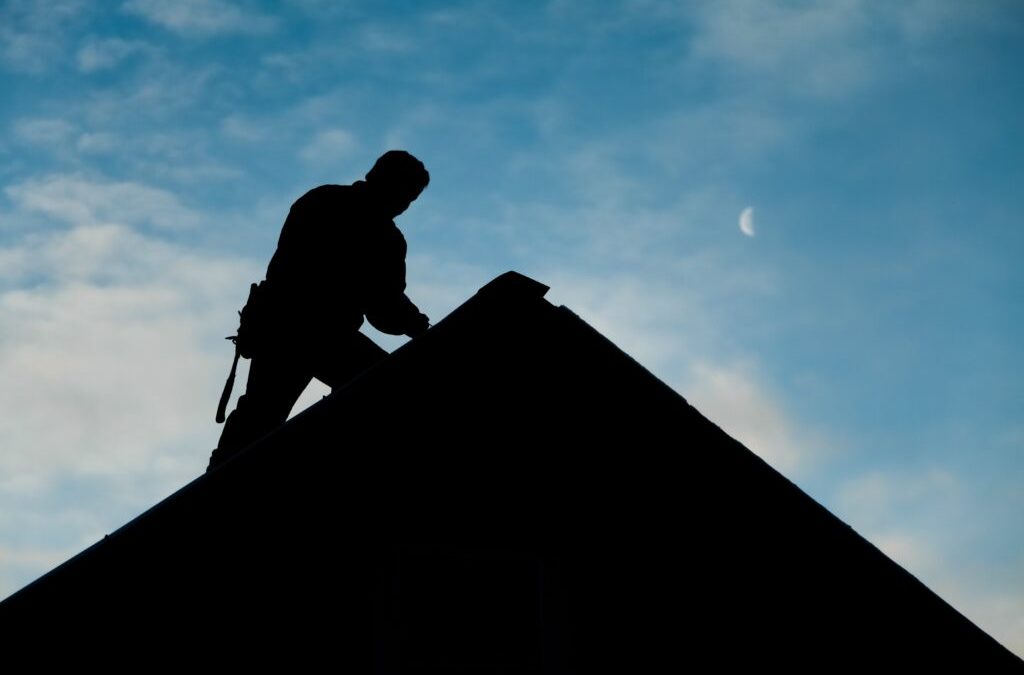Have you heard the craze? White roofs or “cool roofs” can cool your property and neighborhood. Some research shows that by using lighter colored or reflective materials for your roof, you can reflect heat away from your property. Many urban neighborhoods are investing in the idea to help cool entire blocks. But what about roofing in Jacksonville, Fl?
Many urban areas have bought into this idea in order to combat against what experts call, “urban heat island effect.” Science Daily wrote in a report that, “Numerous scientific studies have established that replacing darker roofs and building materials with highly reflective materials can reduce peak daytime temperatures and mitigate the so-called “urban heat island effect” where cities can be several degrees warmer than less-urbanized surrounding areas.
Other researchers have found that these types of materials reflect too much heat back into the atmosphere causing damaging effects. Science Daily’s report goes on to say, “However, many cool-roofing materials reflect more ultraviolet light (UV) than their traditional counterparts, increasing the potential for ozone formation. UV rays fuel smog formation on their way down to Earth. When cool roofs bounce UV rays back up into the atmosphere they create a “double-shot” of ozone formation.”
Roofing Options
The Archizer, a site that allows for expert architects, manufacturers and engineers to come together and discuss new trends and findings, explains that there are many roofing options available to help keep your house cool when you live in a warm climate like in Florida. The article goes onto why certain materials are more energy-efficient and why.
The Archizer article explains how terra-cotta tile and concrete roofs can help reduce energy costs in hot climates. “Clay tiles have been known to stand up to the heat for centuries, regularly lasting as long as 50 years or more,” the article said. “Concrete makes a great option for those who like the thermal properties of terra-cotta but not the price. The thickness of this material means it takes longer to heat in the sun — and hence longer to absorb that heat back into your home. Slab concrete is a cheap — although heavy.”
These are both great options if you are looking to go with a material that is more heat resistant than asphalt shingles, which is a dark and heat-absorbing material. Plus, according to PRNewswire, “About 20 billion pounds of asphalt shingles ending up in U.S. landfills every year according to the EPA. Asphalt shingles also increase dependency on fossil fuels.” Making asphalt shingle roofs not as eco-friendly as other options. Both the tile and concrete roofs do not reflect heat/sun back into the environment the same as other materials on the market. Cache Roofing in Jacksonville recommends tile roofing for many of these reasons.

“Cool-Roof” Trend
EPDM or ethylene propylene diene monomer — which is a synthetic rubber-like material. “The material is particularly effective at heat reduction when it’s coated with titanium dioxide, which gives the EPDM a lighter color. This color reflects light and heat from the roof surface back into the atmosphere,” the article says.
Many cities have gone the route of painting roofs that are currently a dark color white. A Yale article looks into the phenomenon and reports that painting roofs white can lower temperatures by two to three degrees Celcius. It reports that studies show painting roofs white to reflect the sun can not only help with “urban heat island effect” but also help farmers and croplands. Other studies show the impacts could mean reduced rainfall.
The Archizer article warns that “Homeowners should be careful when using these kinds of “cool roof” techniques to reduce energy consumption. Studies have found that this method may have potentially dangerous side effects for the environment at large.”
What About Recycling?
The Archizer article goes on to brag about metal roofs, and it’s easy to see why. These roofs are durable and energy-efficient. “Aluminum, steel and copper roofing products are frequently manufactured from recycled materials; in fact, aluminum roofing systems often contain recycled soda cans, which has a natural appeal for environmental-thinking homeowners,” the article says.
All in all, you have many choices. Cache Roofing also specializes in metal roofing as well as tile roofing, which are both great, energy-efficient and durable materials. Tile roofing can withstand the Florida sun and heat. Shingle roofs tend to crack in the heat and absorb the heat. The new “cool-roof” trend can help cool your home and your surrounding neighborhood if enough neighbors opt in, but many studies show negative environmental impacts with the materials used. Metal roofs can offer some of the same cooling effects but is more environmentally friendly.



Recent Comments